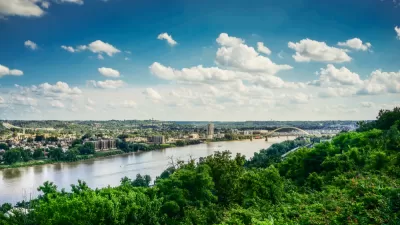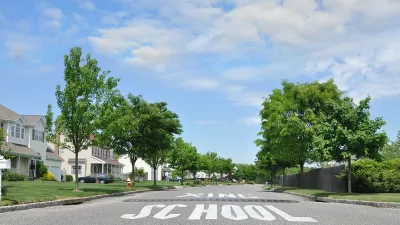Economist Jed Kolko's recent study on how the lack in affordability of cities determines who's moving there, whose moving out, and how these changes are shaping cities and suburbs. His paper is the basis for several articles by leading urban writers.

I find it amazing how much one researcher's work can help inspire so many excellent writers. Jed Kolko's latest study on urban demographics, "Urban Revival? Not For Most Americans," is cited by Matthew Yglesias of Vox, Emily Badger of The Washington Post Wonkblog, and Derek Thompson of The Atlantic, in their articles describing demographic changes in major cities in the U.S.
The Vox piece, in turn, is cited by columnist Paul Krugman of The New York Times, though it would appear that Republican presidential candidate Sen. Ted Cruz (Texas), specifically for the use of the term, "New York Values," may have inspired his column.
The most interesting lede goes to Derek Thompson, senior editor at The Atlantic, who writes that to say that "millennials are living in cities" is not very accurate. It's important to add these demographic qualifiers:
- "Only those with a four-year college degree and incomes in the top 40 percent
- "Mostly the ones without school-age kids
- "[M]ostly just the ones that are white."
However, this is not a "millennial" story. They just help to describe the changing demographics of cities.
- "The richest 10 percent of households were most likely to move into dense urban areas between 2000 and 2014."
- "The poorest 10 percent fled cities the fastest."
- "Meanwhile, the U.S. is becoming much more urban for the white childless elite, and much more suburban for everybody else."
Thompson goes on to describe interesting finds on suburban changes. Sticking with cities, remember the dense, turn-of-the-century tenements marked by extreme poverty? It's been turned on its head. Now "the fastest growing urban areas among this privileged demographic are the most dense—places like Manhattan and Brooklyn, San Francisco, Boston, Washington, D.C.," writes Thompson.
Emily Badger writes about these changes that are readily apparent in the District of Columbia.
Clearly, something big has been happening in the District. The construction cranes prove as much. Whole neighborhoods have been redeveloped, and urban housing prices have skyrocketed. Demographics have perceptibly shifted in the blocks right around the city's metro stops. The District's population has grown by about 90,000 people in the last decade.
Badger calls Washington "a national outlier, and even in this region, the shift toward urban living is driven by a smaller sliver of people than we usually acknowledge."
As Thompson notes, add Manhattan, Brooklyn, San Francisco, and Boston to this elite group. I'd suggest adding even parts of Queens.
But clearly not all large cities are experiencing what Thompson likens to a "geographical Gilded Age." Chicago is not faring well population-wise and "might be a harbinger for other great American cities." He explains what's gone wrong in Chicago to Here & Now's host, Jeremy Hobson, and how to address it.
Hat tip to Loren Spiekerman.
FULL STORY: The Atlantic: American Cities Are Booming—For Rich Young College Grads Without Kids

Maui's Vacation Rental Debate Turns Ugly
Verbal attacks, misinformation campaigns and fistfights plague a high-stakes debate to convert thousands of vacation rentals into long-term housing.

Planetizen Federal Action Tracker
A weekly monitor of how Trump’s orders and actions are impacting planners and planning in America.

In Urban Planning, AI Prompting Could be the New Design Thinking
Creativity has long been key to great urban design. What if we see AI as our new creative partner?

King County Supportive Housing Program Offers Hope for Unhoused Residents
The county is taking a ‘Housing First’ approach that prioritizes getting people into housing, then offering wraparound supportive services.

Researchers Use AI to Get Clearer Picture of US Housing
Analysts are using artificial intelligence to supercharge their research by allowing them to comb through data faster. Though these AI tools can be error prone, they save time and housing researchers are optimistic about the future.

Making Shared Micromobility More Inclusive
Cities and shared mobility system operators can do more to include people with disabilities in planning and operations, per a new report.
Urban Design for Planners 1: Software Tools
This six-course series explores essential urban design concepts using open source software and equips planners with the tools they need to participate fully in the urban design process.
Planning for Universal Design
Learn the tools for implementing Universal Design in planning regulations.
planning NEXT
Appalachian Highlands Housing Partners
Mpact (founded as Rail~Volution)
City of Camden Redevelopment Agency
City of Astoria
City of Portland
City of Laramie





























